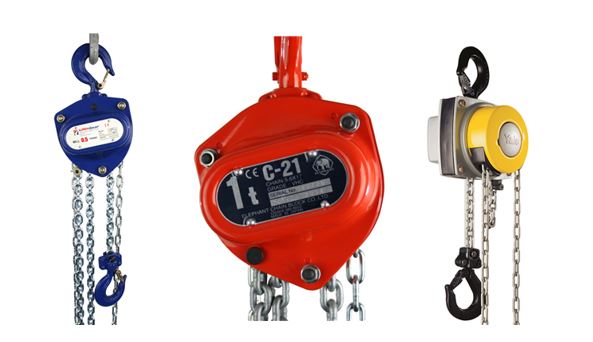Most factories, auto shops and warehouses could not operate efficiently without manual hoists. These devices literally do the heavy lifting, saving business owners tons in labour and energy costs.
If you are looking for ways to increase your operation’s productivity and cost-effectiveness, you should consider investing in a manual hoist.
Benefits of Using a Manual Hoist
Contents
Using a manual hoist offers many advantages:
- A standard manual hoist can lift heavy objects for your operators, minimising work-related injuries like musculoskeletal disorders that come with heavy strain and awkward positions.
- A manual hoist does not need a power supply for it to operate, which helps reduce your energy bill. It is also very useful in work areas where a power source is not readily available or in places where electricity is not allowed, such as some oil and gas installations.
- A manual hoist is easier to use and maintain or even repair.
- Manual hoists are more affordable than other options like electric or hydraulic hoists.
Two Types of Manual Hoist
The manual hoist has two main types: the chain hoist and the lever hoist. The chain hoist can raise or lower heavy objects in a vertical axis, while a lever hoist can move objects both vertically and horizontally.
Manual Chain Hoist
A manual chain hoist has four main parts:
- Hand chain
- Load chain
- Lifting mechanism
- Hook
To lift a heavy object hooked to a manual chain hoist, an operator pulls on the hand chain that is attached to a cog and axle in the lifting mechanism. This turns the shaft and gears, which in turn rotates the load chain sprocket, moving the load chain and lifting the heavy object.
The gears inside the lifting mechanism multiply the amount of work applied on the hoist when the operator pulls on the hand chain.
Manual chain hoists are usually suspended by securing them on beams using clamps or shackles. In other cases, a trolley is used so the load can be moved along the length of the beam to which it is actually attached.
Chain hoists can lift up to 50 tons, which is more than enough for most labour-intensive industries. It can lift and hold heavy pipes in position while other workers weld or bolt them in place.
In auto shops, the manual chain hoist is used to lift car engines, which can weigh up to a thousand kilograms.
Manual chain hoists have many other applications, making them an important addition to any industrial operation.
Manual Lever Hoist
A lever hoist features a handle or lever that the operator manipulates to pull, drag, lift, or lower heavy objects. This lever is attached to a pawl system which is fitted with a load chain.
Cranking the lever turns the pawl system, making the chain turn and moving the load attached to it. If you switch the pawl rod lever, the direction of the movement is reversed.
Most lever hoists can lift up to 10,000 kilograms, which is less than what most chain hoists can lift. However, it offers the advantage of multidirectional movement, which is critical in some applications, such as stretching wires and pulling tree stumps out of the ground.
Which is Better for You?
Each type of hoist has its own advantages and disadvantages. Your choice will ultimately depend on the nature of your operation. For best results, it might be a good idea to invest in both.
Author Bio:
Alison Lurie is a farmer of words in the field of creativity. She is an experienced independent content writer with a demonstrated history of working in the writing and editing industry. She is a multi-niche content chef who loves cooking new things.

